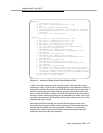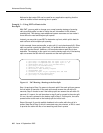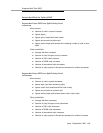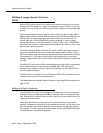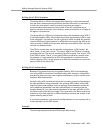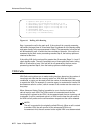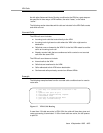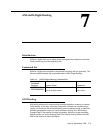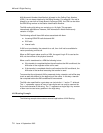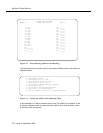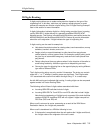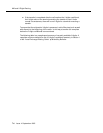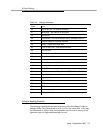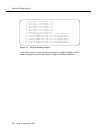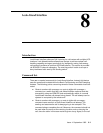
ANI and II-Digits Routing
7-2 Issue 4 September 1995
ANI (Automatic Number Identification) is based on the Calling Party Number
(CPN). It is not always identical to the Billing Number. For example, if the call is
placed by a user from a Private Branch Exchange (PBX), the CPN can be either
the PBX billing number or the Station Identification Number.
The ANI routing digit string can contain up to 16 digits. This supports
international applications. However, ANI information in North America only
contains 10 digits.
The following calls will have ANI values associated with them:
■ Incoming ISDN-PRI calls that send ANI
■ DCS calls
■ Internal calls
If ANI is not provided by the network for a call, then it will not be available for
vector processing on that call.
When an EAS agent makes a call to a VDN, the agent’s login ID is used as the
ANI, not the number of the physical terminal.
When a call is transferred to a VDN the following is true:
■ If the transfer is completed before the call reaches the ANI conditional, the
ANI value of the originator of the call is used.
■ If the transfer is completed after the call reaches the ANI conditional, the
ANI value of the terminal executing the transfer is used.
To ensure that the originator’s ANI is preserved during a transfer, add a filler step
(such as wait with silence) to the beginning of the vector. In this way a transfer
can complete before the ANI conditional is encountered.
The ANI value specified for a goto step can include the “+” and/or “?” wildcard.
The “+” represents a group of zero or more digits and can only be used as the
first or last character of the string. The “?” represents a single digit. Any number
of them can be used at any position in the digit string.
ANI Routing Example
The following example demonstrates several applications of ANI Routing.



